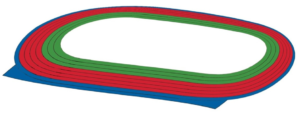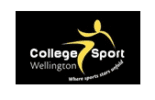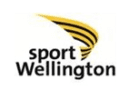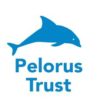HEALTH & SAFETY
COVID 19
Our region is currently under NO ALERTS
INCIDENT REPORTING
Accidents, incidents, near misses and hazards
Incident Reporting Form: HERE
It is the responsibility of all athletes, coaches, officials, parents, spectators and members of the public to report accidents, incidents, near misses and hazards – either during training or competitions. During competitions, a report should be made immediately to the Meeting Manager or Event Director.
OR
If at any time any member of our athletics community or the public is concerned about occurrences of any hazards or incident which may lead to a health & safety issue of people, or damage to Athletics Wellington equipment please report your concerns by completing the above link to report to Athletics Wellington.
This maybe for a STADIUM or OUT OF STADIA event or occurrence.
For General Hazards associated specifically with the Newtown Park Stadium facility:
If urgent, please phone Wellington City Council on 04 499 4444.
For non-urgent matters, please use the online form on their Contact Us page, or their FIXiT mobile phone app.
NEWTOWN PARK ATHLETICS STADIUM
Local Safety Rules and Guidelines
These local rules and guidelines apply for all athletes, coaches, officials, helpers and supporters at the arena.
General
- The arena is owned by Wellington City Council, and is only booked for Athletics Wellington at specific times. Access to the facility is a privilege, not a right. The facility is generally open to all during daylight hours, but every user has a responsibility to act safely and courteously towards others.
- Athletes, officials and coaches using the arena must be aware that members of the public may enter the area unexpectedly at any time
- Always look both directions before crossing the track or any runways. Athletes can travel at great speeds and cannot stop instantly if you step out in front of them
- No kicking or throwing of balls inside Newtown Park while any athletics events or training are occurring.
- No dogs are allowed in Newtown Park – this is a Wellington Council bylaw.
- Do not walk across the infield when throwing is taking place. Be extremely careful when anywhere near the shot, discus, or javelin areas. Only those athletes working out or competing in these events should be in the vicinity.
- Athletes must wear appropriate clothing and shoes and remove or protect jewelry.
- Be conscious of the risks of sunburn, and wear appropriate protection at times of high UV hazard (severe sunburn can occur on unprotected skin even in cloudy conditions during mid-summer).
- Athletes must check their equipment every time, prior to a start, jump or throw.
- Do not leave your clothing bags/equipment lying around where it may present a trip hazard or inconvenience others.
Automatic defibrillator (AED)
- AED locations are maintained on a website and are accessible on a mobile phone app: Click Here
- At the time of writing, the nearest AED is at Wellington zoo, near the lower toilet block. There will also be an AED at the Newtown Fire Station about 200m away along Mansfield St.
Use and security of equipment
- Equipment for general and training use is housed in the first area of the gear shed.
- If any equipment is found to be faulty, please report it immediately to your coach or an Athletics Wellington representative
- It is the responsibility of those using the equipment to ensure that it is put tidily away.
- It is the responsibility of the last key holder on site to ensure that the gear shed is locked and secure before leaving the track.
- When you are leaving, please check that another key-holder is present and agrees to tidy up and lock up. Otherwise do it yourself!
Track – general
- Always be considerate of the needs of other track users and avoid causing collisions.
- Keep clear of the track when not actually running.
- If you run up behind another runner, it is your responsibility to pass safely without causing a collision or interference with the other runner.
- In training, if you are aware of faster runners approaching you from behind, do not change lanes without first checking that it is safe to do so.
- Do not cut in front of people while they are running. This can lead to injury to you and the other runners involved.
- Be aware that we sometimes have physically or intellectually disabled athletes, or children, who might not understand if you call “track”!
- On completion of your run/rep/session move promptly away from the inside lanes.
- If the track is particularly busy during training times, please follow a lane allocation of: Lanes 1, 2 and 3 – for distance running and race walking, Lanes 4, 5, 6 and 7 for sprints, and Lanes 8 and 9 for hurdles.
- Warm-up laps are best practiced outside the arena, on the grass inside the track or on the top field, if available.
- Please do not warm up or warm down by running in lanes 1 and 2
- Return to your starting points via the grass on either side of the track itself.
- For practicing block starts, please use the blue line, not the 80, 100 or 110m start lines
- Maximum spike length allowed: 6mm on Track / 6mm at Long Jump / 9mm at High Jump. Only cone, pyramid or xmas tree spikes are allowed, NO needle spikes.
- Lunging at the finish line can lead to falls and significant injuries, and seldom leads to any race benefit.
Hurdling
- Injuries are a particular risk for those new to hurdles. Such injuries are mainly caused by inadequate technique because of a lack of training.
- It is advisable that athletes who wish to try hurdling get some initial coaching first, and commence with practice hurdles set at a lower height until they have developed adequate technique.
Throws – general
- If you are participating in field events you should be aware that all throws implements are potentially very dangerous to athletes and others. At all times you must observe the safety guidelines set out by your coach (at training) or an official (during competition) .
- Always have assistance and supervision to ensure safe throwing in training and competition. (Please use the “Warning Throwing in Progress” signs).
- Check that your throwing implements are in good condition and appropriate to your age and ability
- Officials and helpers supporting throwing events must never turn their back to the throwing area while in the infield
- There must only be one person at a time inside the discus/hammer cage when throwing is taking place. Athletes must wait for their turn behind the cage.
- For discus, shot, and hammer – check that the throwing circles are dry and clear of foreign objects before throwing
- Only venture onto the throws infield to recover implements when you are specifically instructed to do so by your coach or an official, and even then, always check that the area is clear and that no other events are in progress
- Shotput training is permitted from the High Jump end circle also from the Zoo end circle into the rough across the Pole Vault runway only. Throwing the shot backwards over your head is prohibited. Under no circumstances is shotput training from the Zoo circle to impact on the track or pole line
Jumps – general
- Serious injury and near misses can result from misjudged take-offs and inadequate landing area. This is a particular risk for high jump. Qualified coaches or officials must be present during all high jump training and competition.
- Parents, coaches and officials supervising athletes in high jump, either in training or competition should guide athletes to take off as close as possible to the upright on the side of their approach. This will ensure that they have as much of the pit available for landing as possible. If athletes take-off close to the centre of the pit they risk overshooting and missing the pads on landing. For young athletes it is advisable to put a cone near to the recommended take-off point to provide them with a visual guide for a safe jump.
Scheduled meets and competitions
- Athletes and coaches must always be polite to officials and other persons during competition and avoid ill-tempered and conflict situations.
- Only Meeting Officials, Activity Assistants and Athletes marshalling for events, or competing in an event should be inside the competition arena.
- The Officials Coordinator must check on the health and capabilities of officials to ensure that they are not assigned duties where they may be in danger of injury as a result of limited personal mobility, strength or perception.
- Officials should tend to the long jump pits in the back straight by approaching from the fence side. There are often athletes running in lane 8 and there is insufficient clearance for long jump officials to stand safely on the track side of the pit.
- Warm up throws must be carried out under the supervision of officials in competition order. This is a safety requirement and ensures each athlete is given the opportunity to have the same number of warm up throws.
- Officials must ‘close off’ the circle in between throws/jumps (using a cone) and not open the circle again until ALL officials are in place and paying attention.
- The steeplechase water jump must be under general supervision at all times that it is filled. A person must be assigned to empty the water jump after a steeplechase event to avoid creating a drowning risk for young children.
- It is a rule of all athletic competitions that no coaching is allowed inside the competition arena. Athletes are expected to remain in the marshalling area for their events, and parents and coaches must remain outside the fence. If any coach or parent breaks this rule after being spoken to by a Meeting Official, both they and the athlete may be evicted from the arena resulting in the athlete’s exclusion from further participation in that event. (For throws and jumps a section of the arena fence Is usually reserved for athletes to speak to coaches).
- It is unsafe and unfair for athletes to use the competition arena, during competition time, for training.
- A comprehensive/useful first aid kit must be available – and the whereabouts of it known by quite a few people. Ice should also be available. (Both are in the First Aid room, if it is opened for competition days).
- A designated Safety Officer must be appointed at all athletic meetings at Newtown Park. This person must be independent of any other officiating duties or coaching during the meeting and the nominated person must be able to be easily contactable during the day. If a separate Safety Officer cannot be appointed. The Meeting Manager will be the Safety Officer by default.
Appendix
Lane allocation during busy training times
If the track is particularly busy during training times, please follow a lane allocation of: Lanes 1, 2 and 3 – for distance running and race walking, Lanes 4, 5, 6 and 7 for sprints, and Lanes 8 and 9 for hurdles.














